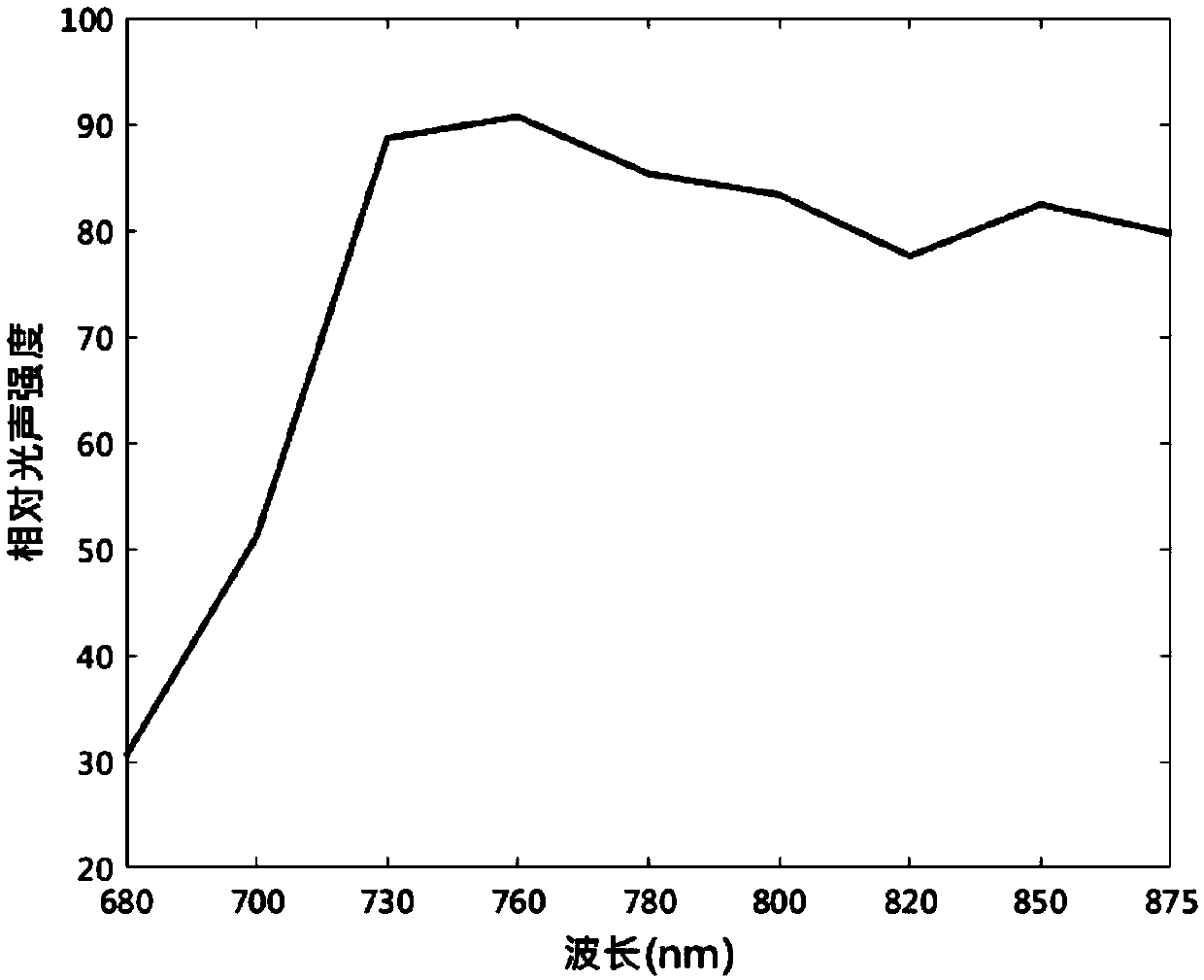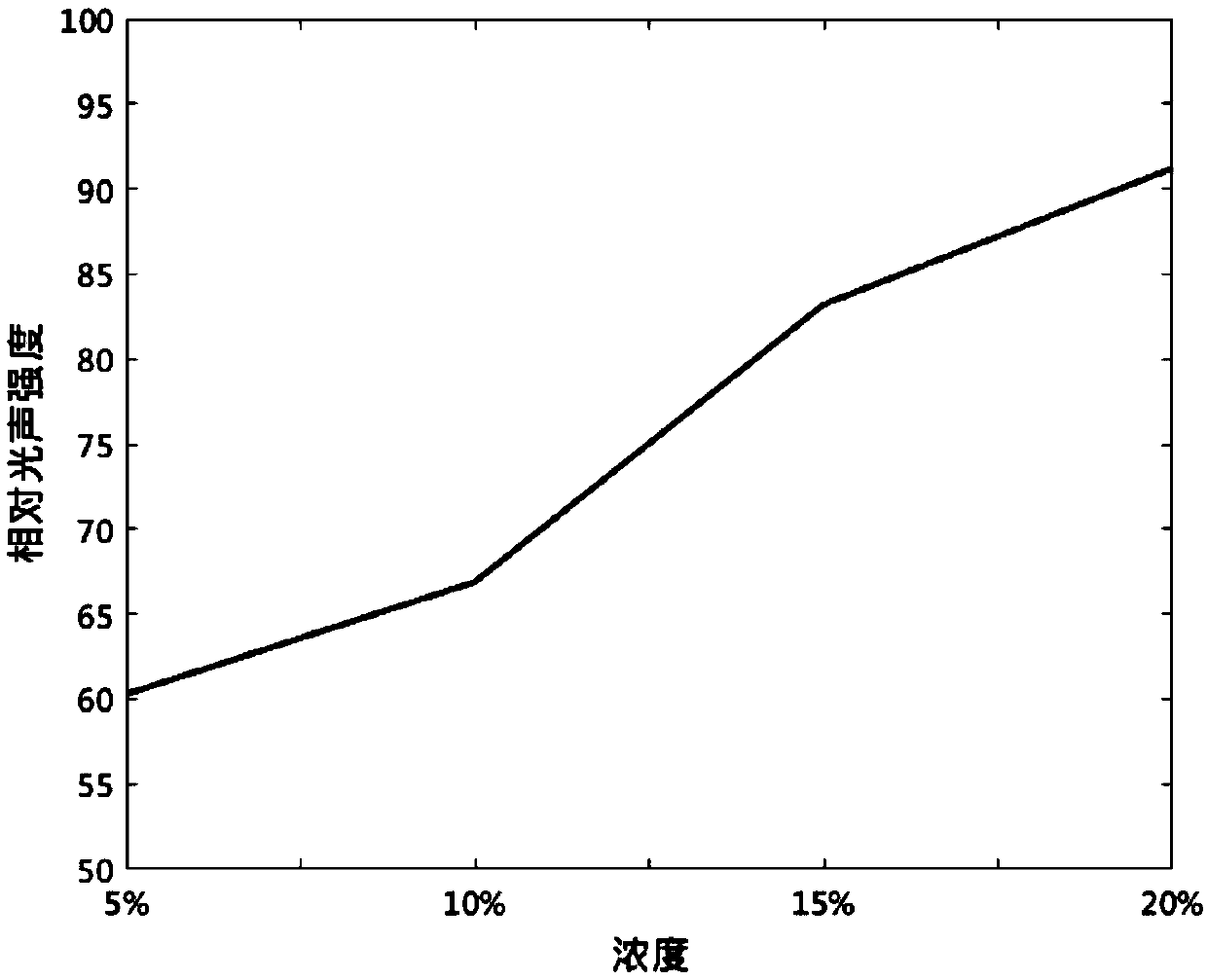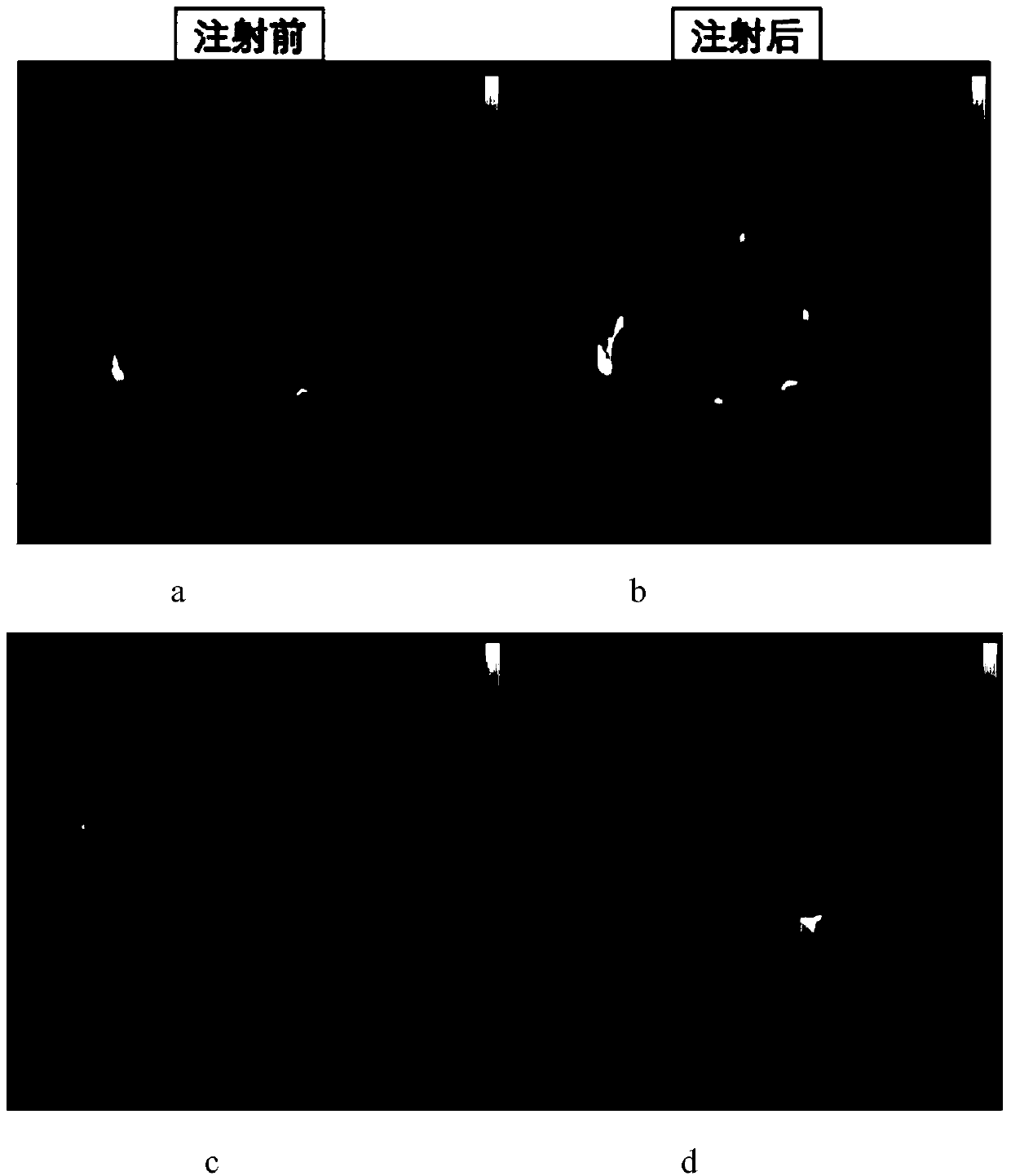Use of fat emulsion as photoacoustic imaging contrast agent
A fat emulsion and photoacoustic imaging technology, which is applied in the fields of biology and optics, can solve the problems of unknown biological safety, complex preparation method, weak contrast, etc., and achieves the enhancement of tissue photoacoustic imaging contrast, the preparation method is simple, and the cost is low. Effect
- Summary
- Abstract
- Description
- Claims
- Application Information
AI Technical Summary
Problems solved by technology
Method used
Image
Examples
Embodiment 1
[0025] The fat emulsion is used as a photoacoustic imaging contrast agent, and the fat emulsion enhances the photoacoustic signal of the tissue and the contrast between the tissue and the background. The fat emulsion consists of soybean oil, lecithin and glycerin, and every 1000ml of 20% fat emulsion contains 200g soybean oil, 12g lecithin and 22g glycerin. Fat emulsions are often used as supplementary drugs for intravenous nutrition in clinical practice, and have a high degree of biological safety.
[0026] Fat emulsions are used for animal or human imaging. When the fat emulsion was used for animal imaging, 20ml / kg of the fat emulsion was injected into the animal through the tail vein. When fat emulsions are used for human imaging, the fat emulsions are injected intravenously into the body.
[0027] The wavelength range of the laser used in photoacoustic imaging is in the near-infrared band. Preferably, the wavelength range of the laser used for photoacoustic imaging is i...
Embodiment 2
[0031] Dilute the 20% medical fat emulsion injection to 15%, 10%, 5% with normal saline, and check their photoacoustic effects under 680nm, 700nm, 730nm, 760nm, 780nm, 800nm, 820nm, 850nm, 875nm pulsed laser Signal. The results show that the fat emulsion has the strongest photoacoustic signal under 760nm laser irradiation, such as figure 1 As shown, and the photoacoustic signal intensity shows a linear increase with the increase of the fat emulsion concentration, as figure 2 As shown, this proves that the fat emulsion has the potential as a contrast agent for photoacoustic imaging.
Embodiment 3
[0033] Nude mice were anesthetized with 5% isoflurane for photoacoustic tomography imaging of the brain and kidneys; then 20ml / kg of 20% fat emulsion was injected through the tail vein, and then photoacoustic imaging was performed on the brain and kidneys , to observe the enhancement effect of fat emulsion on photoacoustic imaging of animal tissue. Before the injection of fat emulsion, the signals of blood vessels in the brain, brain parenchyma and kidney tissue of nude mice were relatively weak, such as image 3 Shown in a and c. like image 3 As shown in middle b and d, after injecting fat emulsion, the photoacoustic signals of the brain blood vessels, brain parenchyma and kidney of nude mice were all significantly enhanced, indicating that the fat emulsion involved in blood circulation enhanced the imaging of the brain and kidney . Therefore, lipid emulsions can be used as contrast agents for photoacoustic imaging to enhance photoacoustic signals in animal tissues.
PUM
 Login to View More
Login to View More Abstract
Description
Claims
Application Information
 Login to View More
Login to View More - R&D
- Intellectual Property
- Life Sciences
- Materials
- Tech Scout
- Unparalleled Data Quality
- Higher Quality Content
- 60% Fewer Hallucinations
Browse by: Latest US Patents, China's latest patents, Technical Efficacy Thesaurus, Application Domain, Technology Topic, Popular Technical Reports.
© 2025 PatSnap. All rights reserved.Legal|Privacy policy|Modern Slavery Act Transparency Statement|Sitemap|About US| Contact US: help@patsnap.com



